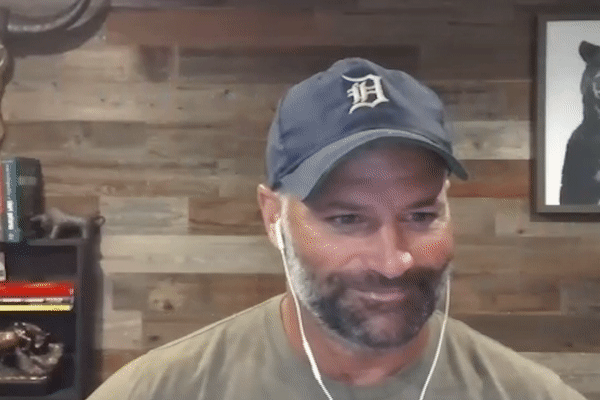I’m not going to lie. It’s been hard for me to find solid trade ideas in this market.
And it’s not because I haven’t been trying.
In such a news-heavy market it’s hard not to be tempted to jump right in and try to make moves.
But if there is one lesson I’ve learned over my long career, it’s…
Whatever you do — don’t force trades.
There’s nothing fun or exciting about sitting on the sidelines.
That said, having consistency as a trader requires serious patience and discipline.
You’ve gotta be like a zen master … sitting on your hands until the perfect opportunity comes along.
If I weren’t so patient, I never would’ve made it this far in the stock market…
Had I forced trades early on in my career, I wouldn’t be teaching today. I’d be part of the 90% of traders who LOSE MONEY.
But luckily, I met Tim Sykes and his guidance changed my life.
Now, I’m here to guide you through anything the market throws at us, just as Sykes did for me when I first joined his Trading Challenge back in 2010…
Bottom line: I’ve been through slow periods before. And I’m ready to reveal some tips and tricks I’ve developed to avoid forcing trades.
But before we get to that, let’s zoom out and take a look at the big picture of the stock market…
My Big-Picture View of the Market
There’s no reason to sugarcoat it … the stock market is in a multi-month downtrend.
The entire year has been ugly for stocks, but the past few weeks have been especially demoralizing for bulls.
The brief relief rally that began in mid-March has been decimated back to YTD lows, with tech giants like Netflix Inc. (NASDAQ: NFLX) and Amazon.com, Inc. (NASDAQ: AMZN) leading the way lower via disappointing Q1 earnings.
For several months, FAANG stocks have had relative strength compared with the overall tech sector.
The fact that some of these names are starting to break down on high volume is a particularly bearish signal.
The Invesco QQQ Trust (NASDAQ: QQQ) recently lost a crucial support level at $320. If the Nasdaq-tracking fund can’t reclaim $320 soon, it could get even uglier.
But if we look at the big picture, QQQ is already down 19% YTD.
This is in line with historical tech drawdowns, where 20-30% can be expected in bear markets.
It’s already a pretty big dip for tech stocks…
It feels like the selling is getting a bit exhausted and a lot of charts are sitting near (or just below) strong support, like QQQ.
In other words, a bounce could be coming. Then I expect further downside later this year.
This is why I’m currently sitting on the sidelines, not making a lot of trades.
We’re at a critical inflection point in the stock market.
I think there could be a big bounce (or a massive moment of capitulation), depending on whether QQQ can get back above support or not.
But it’s better to wait for confirmation of direction. I don’t wanna force any trade too early.
3 Easy Ways to Avoid Forcing Trades
With that in mind, I’d like to tell you about three tips that have helped me to avoid forcing trades throughout my career…
Tip #1: Never Send Market Orders
When traders get overexuberant, they tend to mash the ‘market order’ button.
They let the importance of cost basis move to the back of their minds. DO NOT make this mistake.
Instead, ALWAYS send limit orders. Pick the price at which you’re willing to enter the trade and STICK TO IT.
By sending limit orders, you can name your price. And this should help you avoid the temptation to force the trade at an arbitrary price point.
Tip #2: Focus on Building Your Watchlist
A major component of forcing trades is venturing outside your watchlist.
Don’t do this, especially in the kind of market we’re currently dealing with.
Want to be alerted to hot trade ideas before anywhere else?
Check out the alert for DWAC on October 21st:
This is a tool you’ll want in your trading toolbox.
You’ve built your watchlist for a reason — you understand the psychology of the charts you’re tracking.
So keep it simple. Wait for the stocks in your watchlist to react the way you want them to … don’t go trading new names you’re unfamiliar with!
Tip #3: Don’t Chase Trade Alerts
Chasing alerts is a risky business. It’s important to steer clear of this to avoid unnecessary losses.
I hate to see students lose money by following last-minute alerts with no research of their own.
But when momentum stocks aren’t firing on all cylinders, I see alert-chasing begin to happen more and more.
Staying up-to-date with stock news is important. But don’t be desperate to trade every day.
Unless it’s a five-star setup on a stock you’re watching — let most trade alerts go in one ear and out the other.
Final Thoughts
While experienced traders may be able to take advantage of a market downturn, newbies should stay on the sidelines.
NEVER force trades.
In these market conditions, setups become less predictable and more dangerous. The rewards may be potentially bigger, but the risks are bigger as well…
This is the perfect time for Evolvers to sit on the sidelines and go over plays they’ve been considering, with the plan to strike when the market signals it’s smoothing out…



